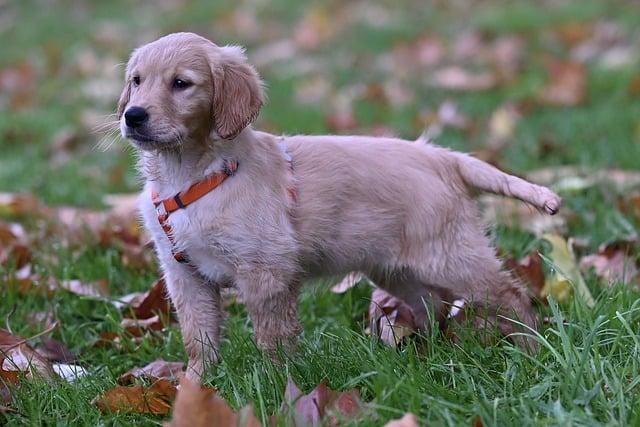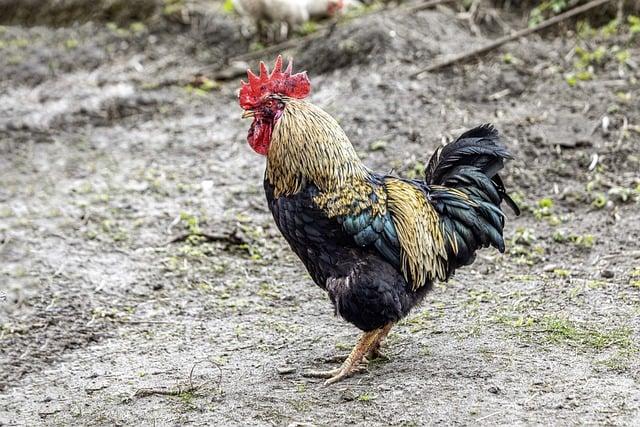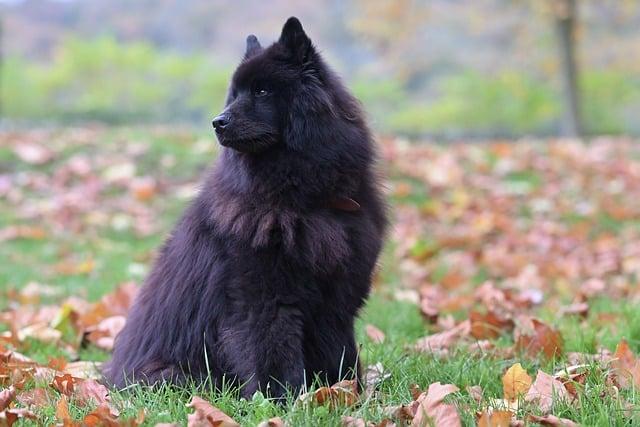In a quiet neighborhood, a family welcomed a new puppy, a Rottweiler named Max. Initially, neighbors whispered about the breed’s reputation for aggression. But as days turned into weeks, they witnessed Max’s gentle nature—playing with children, cuddling with the elderly, and even befriending the local cat. The truth emerged: aggression is not inherent to a breed but shaped by training and environment. Instead of fearing certain breeds, let’s focus on responsible ownership and understanding. After all, every dog deserves a chance to shine.
Contents
- Understanding Aggression in Dog Breeds and Its Root Causes
- Evaluating the Most Commonly Misunderstood Aggressive Breeds
- The Role of Training and Socialization in Mitigating Aggression
- Choosing the Right Breed for Your Lifestyle: Recommendations for Potential Dog Owners
- Q&A
Understanding Aggression in Dog Breeds and Its Root Causes
When exploring the topic of aggression in dog breeds, it’s essential to recognize that aggression is not solely determined by breed. Various factors contribute to a dog’s behavior, including genetics, environment, and socialization. While certain breeds may have a reputation for being more aggressive, it is crucial to understand that individual temperament can vary widely within any breed. Responsible breeding practices and early socialization play significant roles in shaping a dog’s behavior.
One of the primary root causes of aggression in dogs is fear. Dogs that have not been adequately socialized or have had negative experiences with people or other animals may react aggressively as a defense mechanism. This fear-based aggression can manifest in various situations, leading to misunderstandings about a breed’s overall temperament. Additionally, **lack of training** and **inconsistent discipline** can exacerbate aggressive tendencies, making it vital for dog owners to invest time in proper training and socialization.
Another contributing factor to aggression is **territorial behavior**. Many breeds are instinctively protective of their homes and families. This protective nature can sometimes be misinterpreted as aggression, especially if a dog perceives a threat. Understanding a dog’s body language and recognizing the signs of discomfort or anxiety can help owners manage these behaviors effectively. Proper introductions to new people and animals can mitigate territorial aggression and foster a more balanced demeanor.
Lastly, **health issues** can also lead to aggressive behavior in dogs. Pain or discomfort from medical conditions can cause a normally docile dog to react aggressively. Regular veterinary check-ups and attention to any changes in behavior are essential for maintaining a dog’s health and well-being. By addressing potential health problems and ensuring a supportive environment, dog owners can significantly reduce the likelihood of aggression, regardless of breed.
Evaluating the Most Commonly Misunderstood Aggressive Breeds
When discussing aggressive dog breeds, it’s essential to recognize that aggression is often a reflection of the dog’s environment and upbringing rather than an inherent trait of the breed itself. Many commonly misunderstood breeds, such as the **Pit Bull**, **Rottweiler**, and **Doberman Pinscher**, are frequently labeled as aggressive due to sensationalized media portrayals and anecdotal evidence. However, these breeds can be incredibly loyal and loving companions when properly trained and socialized from a young age.
One of the most significant factors contributing to the misunderstanding of these breeds is the lack of education surrounding dog behavior. Many people fail to consider that aggression can stem from fear, anxiety, or a lack of socialization. For instance, a **Rottweiler** that has not been exposed to various people and situations may react defensively, leading to misinterpretations of its behavior. Proper training and socialization can mitigate these issues, allowing these dogs to thrive in family environments.
Moreover, the role of the owner cannot be overstated. Responsible ownership plays a crucial part in a dog’s temperament. Breeds like the **Doberman Pinscher** are often misunderstood because they are protective by nature. However, with consistent training and positive reinforcement, they can be gentle and affectionate. Owners who invest time in understanding their dog’s needs and behaviors can significantly alter the perception of these breeds within their communities.
it is vital to challenge the stereotypes surrounding aggressive breeds. By promoting awareness and education, we can shift the narrative from fear to understanding. Engaging in community programs that focus on responsible pet ownership and breed-specific education can help dispel myths and foster a more inclusive environment for all dogs, regardless of their breed. Emphasizing the importance of training and socialization will ultimately lead to a more harmonious relationship between dogs and their human companions.
The Role of Training and Socialization in Mitigating Aggression
Understanding the dynamics of canine behavior is essential for any dog owner, especially when considering the potential for aggression in various breeds. One of the most effective ways to address and mitigate aggressive tendencies is through comprehensive training and socialization. These practices not only help in shaping a dog’s behavior but also foster a deeper bond between the pet and its owner.
Training provides a structured environment where dogs learn to respond to commands and understand boundaries. This process can significantly reduce anxiety and uncertainty, which are often precursors to aggressive behavior. By implementing consistent training techniques, owners can instill a sense of discipline and respect in their dogs. Key components of effective training include:
- Positive reinforcement: Rewarding good behavior encourages dogs to repeat those actions.
- Consistency: Regularly reinforcing commands helps dogs understand expectations.
- Clear communication: Using distinct cues and signals aids in minimizing confusion.
Socialization, on the other hand, exposes dogs to a variety of environments, people, and other animals. This exposure is crucial for developing a well-rounded temperament. Dogs that are properly socialized are less likely to react aggressively to unfamiliar situations or stimuli. Effective socialization strategies include:
- Early exposure: Introducing puppies to different experiences during their critical developmental stages.
- Controlled interactions: Gradually allowing dogs to meet other pets and people in a safe setting.
- Positive experiences: Ensuring that social encounters are pleasant helps build confidence.
Ultimately, the combination of training and socialization creates a foundation for a balanced and well-adjusted dog. By investing time and effort into these practices, owners can significantly reduce the likelihood of aggression, regardless of the breed. It is essential to remember that a dog’s behavior is not solely determined by its genetics; rather, it is a product of its environment and experiences. Therefore, proactive measures in training and socialization can lead to a harmonious relationship between dogs and their families.
Choosing the Right Breed for Your Lifestyle: Recommendations for Potential Dog Owners
When considering a new canine companion, it’s essential to align your choice with your lifestyle and living situation. Different breeds come with varying energy levels, temperaments, and care requirements. For instance, if you lead an active lifestyle, a breed that thrives on exercise, such as a Labrador Retriever or Border Collie, may be ideal. These breeds not only require regular physical activity but also enjoy engaging in play and training, making them perfect for active families or individuals.
On the other hand, if you prefer a more laid-back lifestyle or live in a smaller space, consider breeds that are known for their calm demeanor and adaptability. Breeds like the Bulldog or Basset Hound are often content with moderate exercise and can thrive in apartments or homes with limited outdoor space. Their affectionate nature makes them great companions for those who enjoy a quieter environment.
For potential dog owners who have children or other pets, selecting a breed known for its sociability and gentle temperament is crucial. Breeds such as the Golden Retriever or Cavalier King Charles Spaniel are renowned for their friendly disposition and ability to get along well with kids and other animals. These breeds can provide a harmonious household, ensuring that everyone feels safe and loved.
Lastly, it’s important to consider the grooming and maintenance needs of different breeds. Some dogs, like the Poodle or Shih Tzu, require regular grooming to keep their coats healthy and free of mats, while others, like the Beagle or Boxer, have minimal grooming needs. Understanding the time and resources you can dedicate to grooming will help you choose a breed that fits seamlessly into your daily routine.
Q&A
- Which dog breed is considered the most aggressive?
While many people often label certain breeds as aggressive, it is essential to understand that aggression is not solely determined by breed. Factors such as training, socialization, and individual temperament play a significant role. Breeds often cited include Pit Bulls, Rottweilers, and Doberman Pinschers, but these labels can be misleading.
- Are aggressive breeds more dangerous than others?
Aggression can manifest in any breed, and it is crucial to evaluate a dog’s behavior on an individual basis. Many so-called aggressive breeds can be loving and gentle when properly trained and socialized. Responsible ownership and training are key to preventing aggressive behavior, regardless of breed.
- What causes aggression in dogs?
Aggression in dogs can stem from various factors, including fear, territorial instincts, lack of socialization, and even health issues. Understanding the root cause of aggression is vital for effective management and training. A well-socialized and trained dog, regardless of breed, is less likely to exhibit aggressive behavior.
- How can I prevent aggression in my dog?
Prevention starts with early socialization and consistent training. Engaging in positive reinforcement techniques, exposing your dog to various environments, and providing mental and physical stimulation can significantly reduce the likelihood of aggressive behavior. Consulting with a professional trainer or behaviorist can also be beneficial.
while certain breeds may have a reputation for aggression, it’s essential to recognize that behavior is shaped by training, environment, and socialization. Responsible ownership and understanding each dog’s unique temperament are key to fostering a safe and harmonious relationship.




